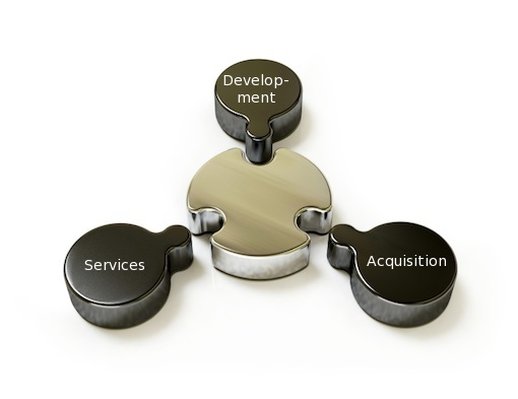CMMI Version 1.3: simpler and truly integrated
The Capability Maturity Model Integration (CMMI) has become an important tool for innovation and improvement in organizations. The Software Engineering Institute (SEI) develops the reference models continuously to incorporate new developments and practical experiences. Now is the updated version 1.3 of all three variants of CMMI (for development, acquisition and services) available. This article describes the changes.

Goals of Version 1.3
Since the release of CMMI-DEV v1.2 in 2006, CMMI many companies and organizations around the world have adopted CMMI, and many experiences (such as the implementation of "High Maturity") were collected. Two new CMMI variants, called constellation, were published: CMMI for Acquisition in 2007 (CMMI-ACQ) and CMMI for Services in 2009 (CMMI-SVC). These three CMMI variants have the same 16 process areas at their core. However, they differ in nuances.
The major goal of version 1.3 was to further strengthen the particular advantage of CMMI, which is its interoperability. The integration of the three variants of CMMI was improved and the elements can now be combined seamlessly. For this purpose:
- the "High Maturity" topics were revised on the basis of extensive experience with statistical process control,
- the differences of the Constellations were reduced in order to improve their interoperability,
- new topics and methods were incorporated in the models and
- adjustments were made for better understanding.
1. Revision of „High Maturity“
With the use of statistical methods in recent years many companies have made concrete experiences. These experiences have been incorporated to improve the statistical practices of CMMI. The so-called "High Maturity" topics are now written more clearly, and the description of "High Maturity" maturity levels was simplified.
Additionally
- the generic goals and practices of capability level 4 and 5 were removed, and
- the process area „Organizational Innovation and Deployment“ (OID) was rewritten and renamed to "Organizational Performance Management".
2. Better Interoperability of the Constellations
- the Core Process Areas were placed in the same category in all Constellations: Project Management, Support and Process Management. As a result the CMMI-DEV process area "Requirements Management" was moved to the category "Project Management".
- the inconsistencies in the glossary were removed. Now the glossary terms are the same in all v1.3 Constellations.
- like in CMMI-ACQ and CMMI-SVC the IPPD addition was removed in CMMI-DEV, and transfered as a new practice to Organizational Process Definition and Integrated Project Management.
- the annotations to the practices in CMMI which describe the governance or management tasks (the so called generic practices) were consolidated at one place in CMMI. These annotations (the so called generic practice elaborations) are now all grouped under the respective generic practice.
3. Incorporation of New Topics and Methods, e.g. Agile Methods
CMMI is a "grid system" that helps you to systematically improve the way of work of your organization. CMMI lists proven good practices that form the "grid", on the basis of which you can review and design the way your organization works. For each practice CMMI lists examples of possible implementations. Especially in recent years, many agile methods have been established, which were now added as examples in version 1.3 of the CMMI for Development.
4. Adjustments for Better Understanding
In addition to these major changes and addition many minor changes were made to simplify the models and to improve clarity. Examples of these changes are:
- The description of the generic practice 3.2 was improved to better describe the aspect of continuous improvement.
- The term "typical work product" was replaced by „Example Work Product" to make clear that these are examples.
- In CAR-like subpractice was added to Integrated Project Management (IPM) to address root cause analysis to show that a root cause analysis is useful even without statistical methods.
- In the process area Measurement and Analysis (MA) a table with examples was added.
- In the CMMI for Services, the term "project" was replaced with the word "work". Thus the CMMI-SVC no longer talks of "Project Planning", but of "Work Planning". This was done to make the work planning practices more understandable for service teams.
